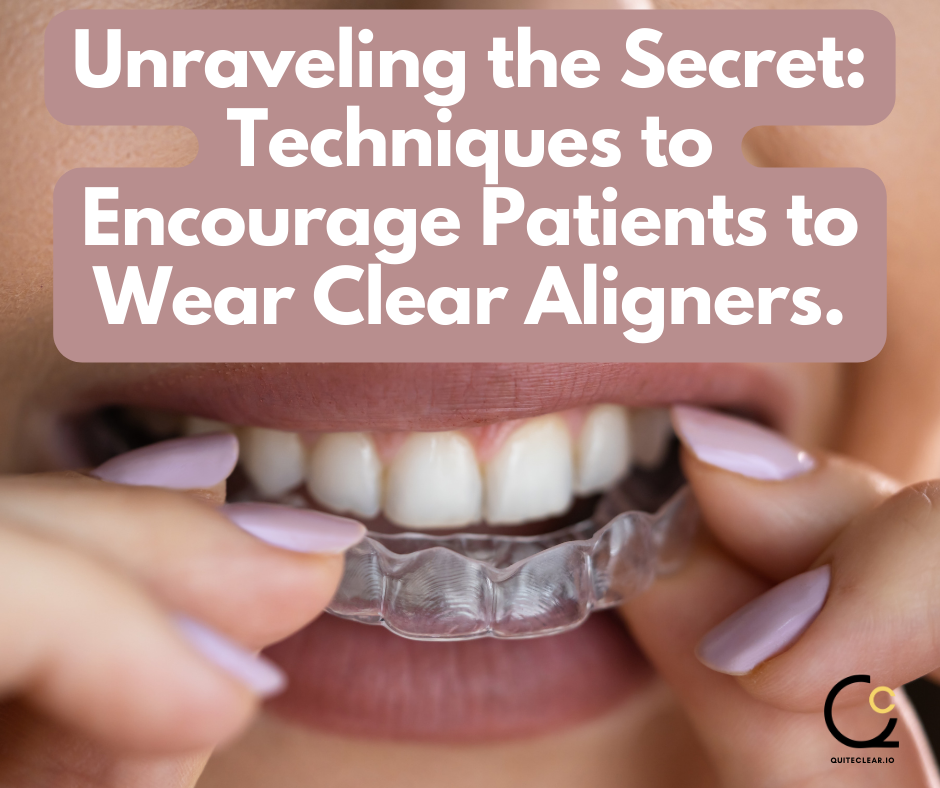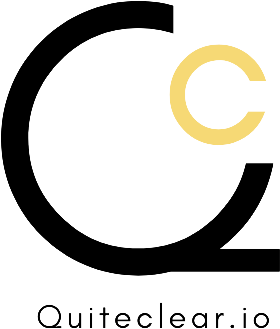Strategies for Identifying & Addressing Patient Non-Compliance with Clear Aligners

At Quiteclear, we specialize in manufacturing Clear Aligners for clients worldwide, catering to individual Orthodontists, Aligner Companies, and Labs. To sustain and thrive in this competitive field, we’ve developed various procedures and maintain a transparent approach to problem-solving, particularly concerning issues related to Clear Aligner fitment.
Let’s face it, successful treatment outcomes depend on numerous variables, including a precise patient scan, a well-designed treatment plan for correcting malocclusion, the use of accurate clear aligners (either in-house or sourced from a manufacturer like Quiteclear), and crucially, a compliant patient.
In a recent blog post, we discussed various factors affecting Clear Aligner efficacy. Now, we’ll delve deeper into strategies to ensure the most critical factor: Patient Compliance.
In our experience, many tracking issues stem from non-compliance, where patients fail to wear aligners for the recommended 20-22 hours daily over two weeks per aligner on average.
So, How Can You Address This Problem Effectively?
- Educate the Patient: In addition to explaining the purpose of the aligner, delve into the specifics of their treatment plan. Discuss how the aligner will gradually shift their teeth into alignment, addressing any concerns or misconceptions they may have. Utilize not only digital tools but also physical models or animations to enhance understanding. Consider offering informational pamphlets or online resources for patients to reference at home.
- Chewies and Proper Seating: While emphasizing the role of chewies in seating the aligner properly, provide demonstrations on how to use them effectively. Explain the science behind the pressure application and its significance in achieving desired tooth movement. Consider offering personalized instructions based on the patient’s specific aligner design or treatment needs.
- Enhanced Follow-up Strategies: In addition to scheduling periodic follow-up appointments, consider incorporating virtual follow-ups via telemedicine platforms. This allows for more frequent check-ins without the need for patients to physically visit the clinic. Request bite pictures to remotely assess the progress. Encourage open communication channels for patients to reach out with any concerns or questions between appointments.
- Interactive Reminders: Instead of generic reminders, personalized messages based on the patient’s progress and upcoming milestones. Incorporate interactive elements such as quizzes or progress trackers to keep patients engaged and motivated. Consider utilizing smartphone apps that provide real-time feedback on aligner wear time and usage habits.
- Financial Incentives and Options: Offer incentives such as discounts for consistent wear or referral programs to reward compliance.
- Comprehensive Monitoring Tools: In addition to cheek retractors for progress pictures, explore advanced monitoring technologies such as digital scanning. These tools allow for more detailed assessments of treatment progress and alignment changes over time. Consider incorporating AI-driven analytics to track and predict treatment outcomes based on patient data.
By integrating these additional details into your approach, you can enhance patient understanding, motivation, and accountability, ultimately improving compliance with clear aligner treatment.
Identifying non-compliance is crucial for maintaining treatment efficacy. Firstly, it’s important to inspect aligners for signs of wear and tear, such as discoloration or distortions, which can indicate irregular wear patterns, suggesting non-compliance. Additionally, during online consultations, requesting images of past aligners allows for a comparison to reveal any inconsistencies in wear duration. Encouraging patients to retain their older aligners for inspection during in-person visits provides a visual assessment of wear over time. Furthermore, having patients wear their last well-fitting aligner during appointments can help determine non-compliance if it fits snugly, indicating inadequate wear of subsequent aligners. Experienced orthodontists can also discern non-compliant behavior based on patient demeanor and responses during consultations.
If non-compliance is suspected, Quiteclear recommends certain actions. Firstly, advising patients to backtrack with their last fitting aligner by wearing it for an additional week before progressing to the next set reinforces the importance of consistent wear. If backtracking fails to yield improvement, considering rescan and replan actions may be necessary. This involves reassessing the treatment plan and aligner fit to ensure proper alignment progression.
Connect with us at connect@quiteclear.io or call us at +91 9909973333 to discover more about our innovative approaches in the field of clear aligners. We eagerly anticipate the opportunity to share further insights and collaborate on optimizing your patients’ treatment experiences.
